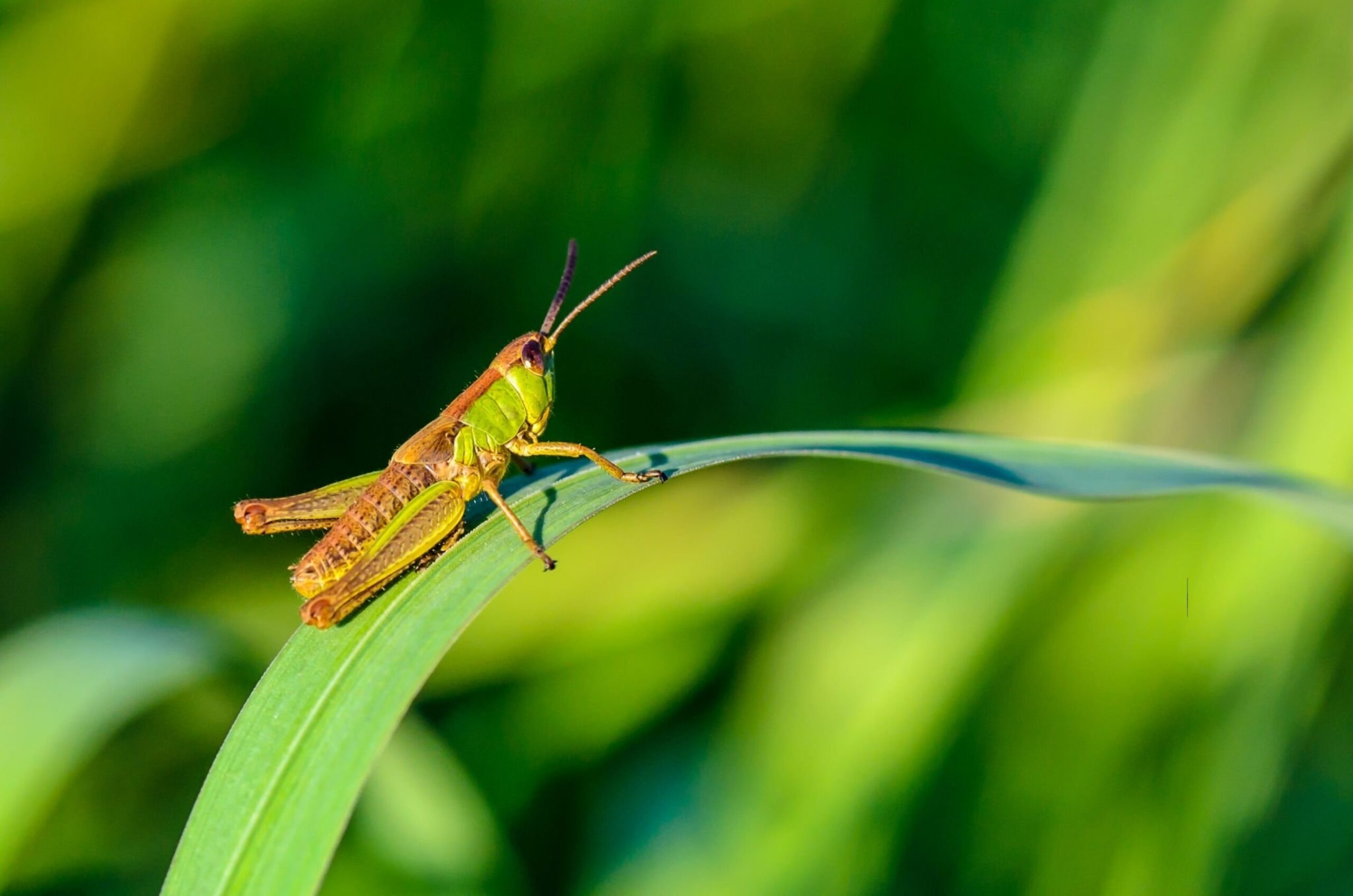Approximately 600 diverse grasshopper species inhabit the U.S., with nearly 30 causing substantial harm to landscape flora and veggies. These insects, part of the Caelifera suborder, are plant-devouring creatures that induce considerable harm, particularly to cereal crops and vegetables. Their proclivity for mass gatherings poses a grave predicament for both farmers and backyard cultivators. The solutions for grasshopper woes range from natural, organic remedies to the application of chemical controls.
However, before launching into a full-scale annihilation spree, it’s imperative to acknowledge the ecological benefits grasshoppers confer. They serve as a crucial food source for avian species, lizards, spiders, and assorted arthropods, while their excrement acts as a nutrient source for plant fertilization. A smattering of grasshoppers frolicking in your garden warrants no alarm, possibly signifying a beneficial ecological balance. It’s only when rampant plant damage occurs that earnest efforts towards control should be contemplated.
Grasshopper Identification and Life Cycle Explained
With their sizable hind legs engineered for leaping, grasshoppers boast sturdy, robust bodies adorned with short antennae, often mistakenly likened to crickets, katydids, locusts, and leafhoppers. Their length typically spans 1 to 3 inches, though occasionally reaching an astonishing 5 inches (yikes!) – but let’s remember, grasshoppers come in myriad species, not merely the green variety!
During late summer and fall, adult female grasshoppers meticulously deposit eggs in undisturbed soil locales like open fields, roadsides, weedy terrains, and rangelands. These eggs, nestled in elongated pods within the upper 2 inches of soil, await the following spring, hatching in late April to early May and peaking around mid-June.
The youthful grasshoppers, known as nymphs, lack the prowess of flight but bound and crawl in search of verdant foliage for sustenance. As their primary food source – weeds – wanes, these nimble nymphs migrate to residential yards, vegetable patches, and agricultural fields in pursuit of nourishment.
Optimal timing for pest control tactics arrives in early summer, precluding the nymphs’ acquisition of wings. Once their wings develop, these agile grasshoppers swiftly evade any chemical interventions, taking flight to safer realms.
Grasshopper outbreaks are often heralded by consecutive years of scorching, arid summers and balmy autumns. A female grasshopper, on average, lays about 200 eggs per season, occasionally doubling to a staggering 400. Should weather conditions favor, the ensuing year could witness an exponential surge in grasshopper populations.
These warm temperatures foster increased egg deposition, bolstering survival rates for both nymphs and adults. With successive warm seasons, the grasshopper populace burgeons, eventually culminating in widespread infestations.
Identifying Grasshopper Invasion in Your Garden
Grasshoppers, a widespread presence across the United States, display hues spanning from green to gold or brown. They leave behind telltale signs—a garden adorned with chewed, tattered leaves. Their feeding frenzy commences in early summer, persisting until the initial frost of fall, their numbers swelling as the season progresses. With over 100 diverse species, their voracious appetites spare no plant variety. Some opt for weeds and low-value grasses, while others indulge in prized veggies like lettuce, carrots, beans, and corn, alongside cherished perennials.
Spring heralds the emergence of most grasshoppers from eggs laid the prior fall. A damp, chilly spring might obliterate numerous hatchlings, while a dry one poses challenges due to insufficient plant growth for their survival. The prevailing weather conditions during hatching wield considerable influence over the impending invasion of these insects into your garden.
Eliminating Grasshoppers: 10 Diverse Tactics
Grasshoppers, known for their swift mobility, pose a formidable challenge in control measures. Curbing their proliferation stands as the foremost approach in averting damage, emphasizing the exploration of natural solutions before resorting to synthetic chemical interventions.
Encourage Natural Predators.
Avian allies like swallows and other grasshopper-gobbling creatures—think praying mantises, tiny serpents, and toads—prove invaluable in minimizing or eradicating infestations. Cultivate practices that foster these natural adversaries for optimal effectiveness.
Soil Management Strategy:
Mid- to late summer soil tilling eradicates egg-laying spots for overwintering eggs, hatching in spring. Repeat tilling in late fall and early spring obliterates prior summer’s laid eggs, curbing grasshopper lifecycle.
Weed Control Tactics:
Banish weeds from all zones, depriving freshly hatched nymphs of sustenance. Effective weeding slashes grasshopper numbers significantly. Tip: Mow a narrow, 6-foot buffer strip bordering meadows, pastures, or woodlands adjacent to your garden. This low foliage denies grasshoppers food and cover, exposing them to avian predators and other natural foes.
Shielding Vulnerable Flora:
Enshroud susceptible plants using cheesecloth or crop covers, warding off grasshopper feeding. While this tactic defends against incoming insects, consider supplementing with additional methods targeting existing grasshopper populations.
Garlic Repellent Brew:
Combine 2 cups of garlic with 10 cups of water, boiling the blend and letting it rest overnight. Dilute one part of this solution with 3 parts water in a spray bottle, coating the leaves of at-risk plants. This potent spray acts as a deterrent, warding off not only grasshoppers but also other voracious insect feeders.
Flour Coating Method:
Dust plant foliage with flour, gumming up grasshoppers’ mouths during feeding. Reapplication becomes necessary post rain showers, replenishing the deterrent effect.
Avian Pest Patrol:
Harness chickens’ voracious appetite for grasshoppers by allowing a couple to roam your garden, ensuring comprehensive pest control. Ducks and geese also excel in this role, offering an effective natural defense against grasshoppers and various insects if your community and setup permit their presence.
Biological Defense Arsenal:
Combat grasshoppers using Nosema locustae, Beauveria bassiana fungi, and azadirachtin found in neem oil. Embrace organic pyrethrins, but steer clear of pyrethroids due to their synthetic additives, undermining their organic status. These biological agents disrupt grasshoppers’ digestion, offering effective, eco-friendly control methods.
Chemical Pest Control Insights:
When essential, deploy chemical baits or sprays marked for grasshopper control, strictly adhering to label instructions. Target developing grasshopper stages and egg-laying sites, is crucial for effective treatment as their control efficacy diminishes with maturity and migration.
Carbaryl stands as the most potent chemical pesticide against grasshoppers, albeit posing significant harm to beneficial insects. Employ baits with carbaryl cautiously, prioritizing areas with active grasshopper feeding to protect bees and other beneficial species.
Focus chemical treatments on young grasshoppers and breeding sites during spring and early summer, adapting to regional variations. Enhance control by infusing canola oil into insecticide sprays, rendering treated plants more enticing to grasshoppers.
Grasshopper invasions follow cyclical multi-year patterns; expect recurring heavy infestations after prevalent years. While populations gradually decrease, brace for subsequent surges post a year of severe infestation.
Vinegar Applications.
Deploy distilled white or apple cider vinegar in open areas, acting as bait. Alternatively, dilute vinegar with water in a spray bottle and target plants during grasshoppers’ peak activity in the mornings, repeating the process every three days.
Grasshopper infestations often manifest in cyclical multi-year patterns. After a prevalent year, brace for potential recurrence. While populations gradually dwindle, brace for subsequent heavy infestations following a previous year’s surge. Strategically aiming control methods at developing stages and breeding sites ensures a more effective response.
What Causes Grasshoppers in the Garden?
Expect grasshopper troubles during regional population surges, particularly if cultivating cherished crops like corn, lettuce, and beans. During peak periods, they ravage almost any garden produce and ornamentals. Such infestations are notorious for decimating entire crop fields, causing routine losses of up to 25 percent in certain regions.
How to Prevent Grasshoppers in the Garden?
Amidst peak grasshopper years, shielding your garden demands multifaceted tactics due to universal vulnerability. Dodge planting preferred grasshopper snacks while rallying natural predators, practicing robust weed control, and deploying organic deterrents. However, total prevention in years of rampant regional infestations remains elusive.
When to Call a Pest Control Pro
If grasshoppers persistently plague your crops, enlist a local pest control professional’s aid. Taming these voracious pests poses a challenge, and an exterminator adeptly administers commercial insecticides while devising preventative measures against future infestations.

